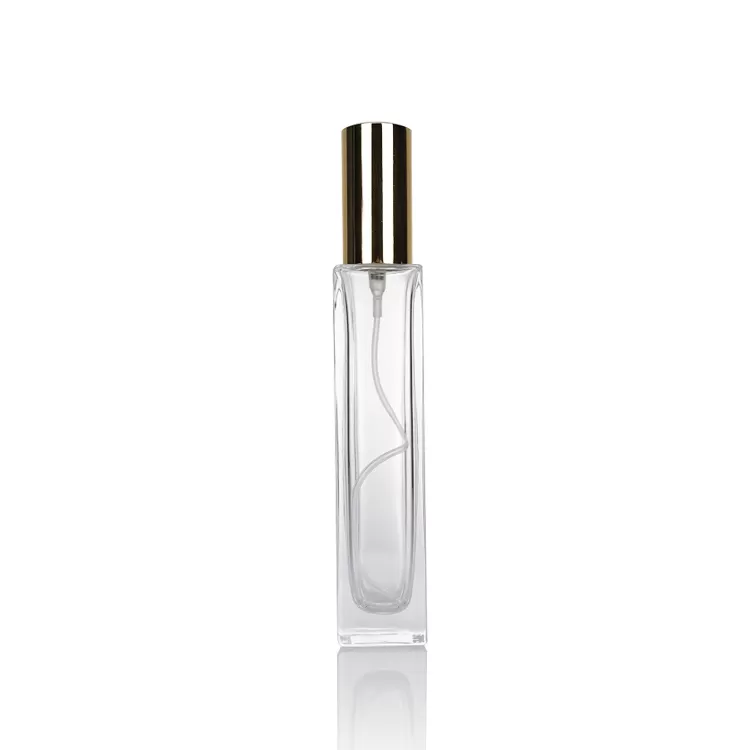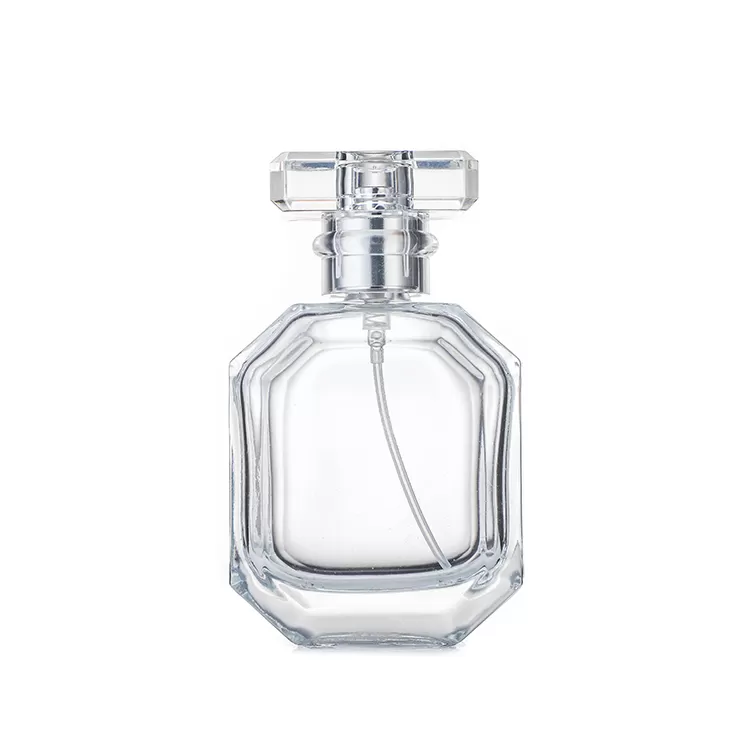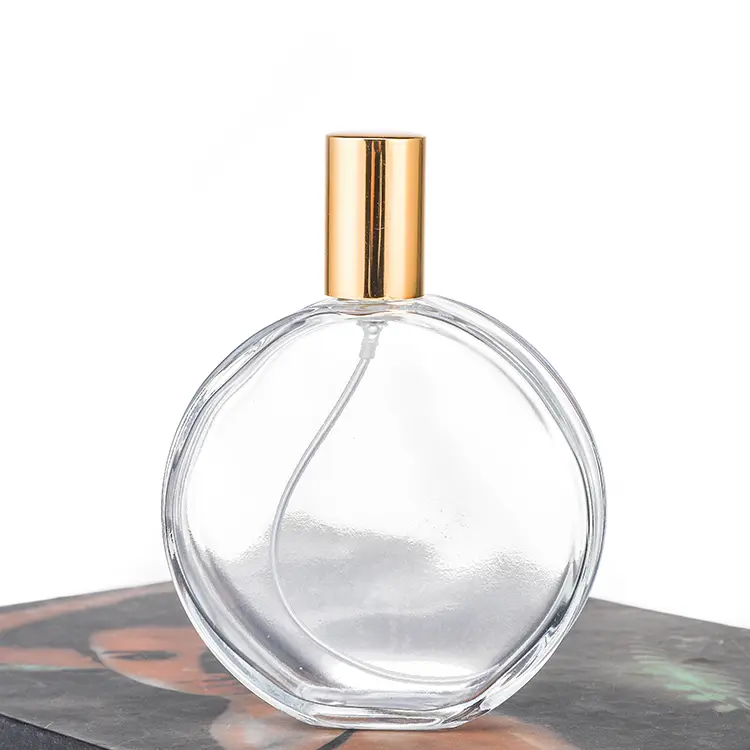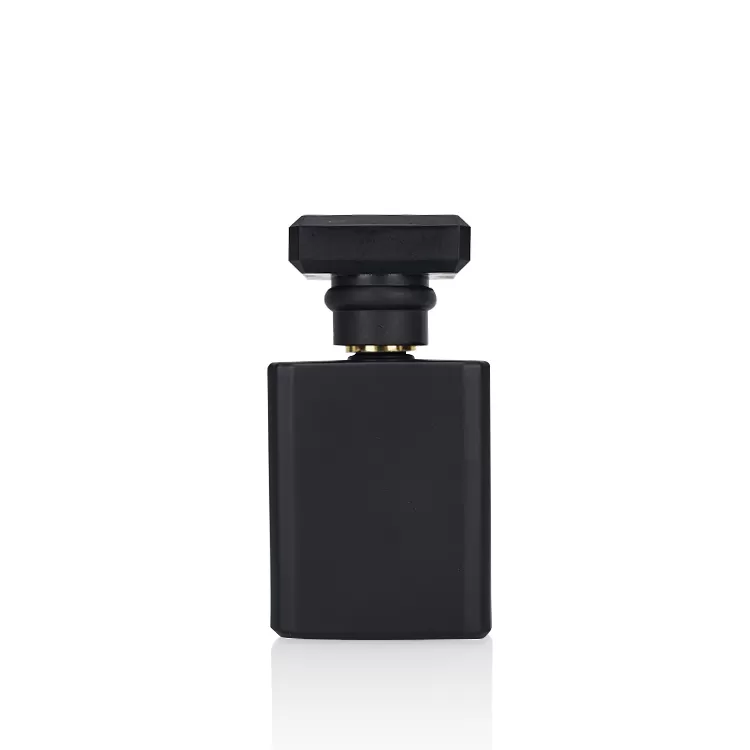The Subtle Power: Decoding the Psychology Behind Perfume Packaging Design and Color
04-22-2025
The world of perfume is enchanting, a realm where scent evokes memories, emotions, and desires. But before the first spritz, before the fragrance even reaches the nose, the perfume package makes the first impression. This initial encounter is heavily influenced by visual cues, particularly color and design. Understanding the psychology behind perfume packaging is crucial for any perfume brand aiming to connect with consumers on a deeper level. This article delves into the fascinating interplay between design and consumer perception, exploring how the design of perfume containers, especially the use of color, shapes our feelings and choices. We'll uncover why the color psychology in perfume packaging isn't just an aesthetic choice but a powerful marketing tool, essential for creating brand identity and driving sales in the competitive perfume industry. Reading this will give you insights into how to leverage color psychology to create effective perfume packaging that truly resonates.
Why Does Perfume Packaging Design Matter So Much?
In the bustling perfume industry, where countless fragrances compete for attention, the perfume package serves as the silent salesperson. Packaging plays a pivotal role far beyond simply holding the perfume. It's the first tangible interaction a consumer has with the perfume brand, setting expectations about the fragrance within, its quality, its target audience, and its price point. The design of perfume containers, including the bottle shape, materials, typography, and especially the packaging color, communicates a complex message almost instantaneously. Effective packaging designs can capture attention, convey luxury or playfulness, hint at the type of perfume (floral, woody, oriental, fresh), and ultimately, influence consumer purchase decisions.
Think about browsing a perfume counter. Which bottles draw your eye? Often, it's the ones with unique shapes or captivating colors. A sleek, minimalist design might suggest a modern, sophisticated perfume, while an ornate glass bottle could imply a classic, luxurious fragrance. The perfume packaging design is an integral part of the brand identity, helping to differentiate a perfume from its competitors and build brand loyalty. For procurement officers like Mark Thompson, sourcing packaging that aligns with the brand's vision while maintaining quality and cost-effectiveness is paramount. The packaging must not only protect the perfume but also enhance its perceived value, making the whole perfume packaging experience, from box to bottle and applicator, cohesive and appealing.
The significance of perfume packaging extends to the post-purchase experience as well. A beautiful perfume bottle often becomes a decorative item on a vanity table, serving as a constant reminder of the perfume brand. This part of the ever-present packaging reinforces the user's connection to the fragrance and the brand. Poor product packaging design, conversely, can detract from even the finest perfume, suggesting lower quality or a lack of attention to detail. Therefore, investing in thoughtful and effective perfume packaging is not an expense, but a strategic necessity for success in the competitive perfume market. The packaging often tells a story even before the fragrance does.

What is Color Psychology and How Does it Apply to Perfume Packaging?
Color psychology is the study of how colors affect human behavior and emotions. It explores the emotions and associations people have with different hues, which can be influenced by cultural background, personal experiences, and universal responses. When applied to perfume packaging design, color psychology becomes a powerful tool to evoke a sense of the fragrance's character, target audience, and intended mood without using words. The choice of colors for perfume packaging is rarely arbitrary; it's a calculated decision aimed at creating specific feelings and perceptions behind perfume.
Understanding consumer psychology is key here. Colors trigger subconscious responses. For instance, warm colors like red and orange are often associated with energy, passion, and excitement, while cool colors like blue and green tend to evoke calmness, serenity, and nature. In the context of perfume, a vibrant red perfume bottle might suggest a bold, sensual fragrance, perfect for evening wear. A soft pink packaging color, often used in perfume marketed towards women, typically implies femininity, romance, and delicacy. A blue bottle, conversely, might hint at a fresh, aquatic, or clean perfume, often targeted towards men or unisex markets.
Applying color psychology in perfume packaging requires a deep understanding of both the fragrance itself and the desired brand identity. The goal is to create a harmonious connection between the visual presentation and the olfactory experience. The color of the perfume liquid itself, visible through a clear glass bottle, also contributes to this perception, working in tandem with the packaging boxes and other design elements. Perfume brands can create a strong emotional connection with consumers by carefully selecting a color palette that aligns with the perfume's story and resonates with the target demographic, making the product packaging a vital communication channel.
How Do Specific Colors Influence Consumer Perceptions of Perfume?
Specific colors evoke distinct emotions and associations, profoundly impacting how a perfume is perceived even before it's smelled. Choosing the right color is essential in perfume packaging design.
- Black: Often signifies luxury, sophistication, mystery, and power. Black packaging boxes or bottles are frequently used for high-end, intense, or evening fragrances. It lends an air of elegance and exclusivity to the perfume. Think of iconic perfume brands that use black to convey timeless chic.
- White: Represents purity, simplicity, cleanliness, and modernity. White packaging is often used for light, fresh, or floral fragrances. It can also be employed in minimalist design to create a sense of understated elegance for a perfume. Many contemporary perfume brands favor white for its clean aesthetic.
- Gold/Silver: These metallic colors in perfume packaging immediately suggest luxury, wealth, and prestige. They are often used as accents or for the entire perfume bottle or box, particularly for premium or special edition fragrances. Gold evokes warmth and opulence, while silver feels sleek and modern. An aluminum perfume collar in gold or silver can add a touch of luxury.
- Red: A color of passion, energy, excitement, and confidence. Red perfume packaging often signals a bold, sensual, or romantic fragrance. It's eye-catching and demands attention, suitable for a perfume that wants to make a statement.
- Pink: Strongly associated with femininity, romance, sweetness, and youthfulness. Often used for floral or fruity fragrances targeted at women. Lighter pinks suggest delicacy, while brighter pinks feel more playful and energetic for a perfume.
- Blue: Evokes calmness, serenity, freshness, and stability. Commonly used for aquatic, clean, or masculine fragrances. Light blue suggests airiness and water, while dark blue implies depth and sophistication for a perfume. A blue bottle is a popular choice for men's perfume.
- Green: Associated with nature, freshness, tranquility, and health. Often used for herbal, citrus, or earthy fragrances. It suggests natural ingredients and can appeal to eco-conscious consumers looking for a fresh perfume.
- Purple: Represents royalty, luxury, creativity, and spirituality. Often used for unique, exotic, or sophisticated fragrances. It can lend an air of mystery and intrigue to a perfume.
Understanding these associations allows perfume brands to select colors for perfume packaging that accurately reflect the fragrance's essence and appeal to the intended consumer, influencing perception and driving purchase intent. The psychology behind these choices is a fundamental aspect of perfume marketing.

Beyond Color: What Other Design Elements Shape Perfume Perception?
While color is a dominant force, other design elements play a crucial role in shaping how consumers perceive a perfume. The overall perfume packaging design is a symphony of components working together to create a desired impression. The bottle shape, for example, communicates volumes. A tall, slender perfume bottle might suggest elegance and grace, while a geometric or angular design creates a modern, edgy feel. A rounded or curved unique bottle can imply softness and femininity. The bottle design is often the most memorable physical aspect of a perfume.
Material choice is another critical factor. Glass bottles are the standard in the perfume industry, conveying quality and preserving the integrity of the fragrance. The type of glass – clear, frosted, colored – adds another layer of meaning. Heavier glass often feels more luxurious. Caps and closures, like an aluminum perfume collar or a uniquely designed stopper, also contribute significantly to the perceived value and aesthetic. These details, including the perfume aluminum collar, enhance the tactile experience and reinforce the perfume's positioning. Even the texture of the packaging boxes or the bottle itself can influence perception, with smooth finishes feeling sleek and textured finishes adding depth or rusticity.
Typography on the perfume package – the font style, size, and placement of the perfume brand name and fragrance description – is vital for conveying personality. Elegant scripts might suit a classic perfume, while clean sans-serif fonts align with a modern fragrance. Imagery or patterns used on the packaging boxes further contribute to the narrative. Ultimately, all these design elements, from the bottle body to the smallest detail on the box, must work cohesively with the chosen color palette to tell a consistent story about the perfume and its brand identity, creating an effective packaging experience. Packaging design goes far beyond mere aesthetics; it's about crafting an experience.
Are There Key Trends in Perfume Packaging Design to Watch?
The perfume packaging landscape is constantly evolving, influenced by broader design trends, shifts in consumer values, and technological advancements. Staying aware of trends in perfume packaging is crucial for brands wanting to remain relevant and appealing. One significant trend is sustainability. Consumers are increasingly demanding eco-friendly packaging solutions, leading brands to explore recycled glass, biodegradable materials for packaging boxes, refillable perfume bottle designs, and reduced overall packaging. Minimalist packaging often aligns with this trend, using less material and focusing on clean lines and simplicity.
Another key trend is personalization and customization. Brands are exploring ways to offer custom perfume bottles or packaging options, allowing consumers to feel a stronger connection to their chosen fragrance. This might involve engraved bottles, customizable labels, or unique color combinations. This resonates particularly well in the luxury perfume packaging segment. Technology is also playing a role, with innovations like the airless bottle gaining traction. While less common for traditional perfume, airless technology protects the fragrance from oxidation and contamination, potentially influencing future of perfume packaging for certain formulations or solid perfume. The packaging container in recent years has seen significant innovation.
Minimalism continues to be a strong aesthetic trend. Clean lines, simple typography, and a restricted color palette convey sophistication and modernity. This minimalist design approach focuses attention on the quality of the perfume bottle and the fragrance itself. Conversely, maximalism and vintage-inspired designs also have their place, appealing to consumers seeking nostalgia, opulence, or unique storytelling through intricate details and bold color schemes. Keeping abreast of these trends in perfume packaging allows brands and manufacturers like us at GLT Glass Bottle to offer relevant and desirable cosmetic packaging container in recent years.
How Can Perfume Brands Effectively Use Color Psychology?
Effectively leveraging color psychology in perfume packaging goes beyond simply picking an appealing color. It requires a strategic approach that aligns the chosen hues with the fragrance profile, target audience, and overall brand identity. The first step is a deep understanding perfume characteristics: Is it floral and light, dark and musky, fresh and citrusy? Each scent profile naturally lends itself to certain color palettes. A light floral perfume, for instance, might pair well with pastels like pink or soft green, while a spicy oriental perfume could be represented by rich reds, purples, or gold.
Secondly, perfume brands can create more impact by considering their target demographic. Age, gender, lifestyle, and cultural background influence color perception. Researching the preferences and associations of the intended consumer group helps in selecting colors for perfume packaging that will resonate most effectively. For example, colors like bold neons might appeal to a younger audience seeking a vibrant perfume, while muted earth tones could attract consumers looking for a natural or unisex fragrance. Consistency is also key. The chosen color palette should be applied consistently across all product packaging design elements, including the perfume bottle, packaging boxes, and any promotional materials, to reinforce the brand identity and create a cohesive message.
Finally, brands should not be afraid to use color boldly or subtly to differentiate themselves in the competitive perfume market. This might involve using an unexpected color for a particular fragrance category to stand out, employing unique color combinations, or focusing on the bottle color itself as a key differentiator. Testing different color schemes with focus groups can provide valuable feedback before finalizing the perfume packaging design. By strategically applying color psychology, brands can enhance the perceived value of their perfume, create stronger emotional connections, and ultimately drive brand loyalty. This strategic use of design is crucial.

What Role Does the Perfume Bottle Material Play?
The material chosen for a perfume bottle significantly impacts the perception of the perfume, its preservation, and the overall user experience. Glass is overwhelmingly the preferred material in the perfume industry, and for good reason. A glass bottle inherently conveys a sense of quality, luxury, and permanence that other materials, including plastic bottles, often struggle to match. The weight and coolness of glass in hand contribute to a premium feel, enhancing the perceived value of the fragrance inside the bottle.
Beyond aesthetics, glass offers practical advantages. It is chemically inert, meaning it doesn't react with the complex compounds that make up a perfume. This ensures the integrity and longevity of the fragrance, preventing alterations in scent over time. Clear glass allows the color of the perfume liquid to be showcased, adding another visual dimension, while colored or frosted glass can protect the perfume from light degradation, a crucial factor for preserving delicate scent molecules. As experienced perfume bottle manufacturers, we understand the technical nuances required for high-quality perfume glass.
The choice between different types of glass or finishes also adds to the narrative. Crystal-clear flint glass offers maximum transparency, while frosted glass provides a softer, more diffused look. High-quality glass allows for intricate bottle design possibilities, including embossing, debossing, and unique shapes, further contributing to the perfume's identity. While alternative materials exist, the combination of aesthetic appeal, inertness, and perceived value makes the glass bottle the enduring standard for luxury perfume packaging and most other perfume segments. The quality of the bottle is mainly determined by the glass used.
How Does Packaging Color Connect with Brand Identity in the Perfume Market?
In the visually driven perfume market, packaging color is a cornerstone of brand identity. It's often the most immediate visual cue that consumers associate with a specific perfume brand or fragrance line. Consistent use of a signature color palette across product packaging, advertising, and branding materials helps to build recognition and reinforces the brand's personality and values. Think of iconic brands – often, a specific color or combination instantly comes to mind, inextricably linked to their image and the perfume they offer.
The chosen colors communicate the brand's positioning. Luxurious brands often gravitate towards black, gold, silver, or deep jewel tones to convey exclusivity and sophistication. Brands emphasizing natural ingredients might lean towards greens, browns, and blues, reflecting an earthy or aquatic fragrance. Youthful, energetic brands might opt for brighter, bolder colors in perfume packaging to signal vibrancy and playfulness. The color in perfume packaging acts as a shorthand, telling consumers what the brand stands for and what kind of experience the perfume is likely to offer, helping establish strong brand identity.
Furthermore, color consistency fosters brand loyalty. When consumers repeatedly encounter the same color schemes associated with a perfume brand they trust and enjoy, it strengthens their connection and makes future purchases easier to identify. For businesses like Mark Thompson's, supplying packaging products that allow cosmetic companies to maintain this color consistency is vital. Discrepancies in packaging color from batch to batch can damage a brand's image and erode consumer trust. Therefore, careful color management and selection are critical components of building and maintaining a successful perfume brand identity through its perfume package. The packaging becomes a visual ambassador.
What Should Buyers Consider When Choosing Colors for Perfume Packaging?
Choosing the right color palette for perfume packaging is a critical decision for buyers, whether they are perfume brand owners or procurement specialists like Mark Thompson sourcing for clients. Several factors must be weighed to ensure the colors for perfume packaging are effective. Firstly, consider the fragrance profile. As discussed, the scent itself (floral, woody, fresh, oriental) should guide the initial color direction. The packaging color should ideally evoke a sense of the perfume's character. Mismatched colors can create confusion or disappointment when the actual fragrance doesn't align with the visual expectation set by the perfume package.
Secondly, the target audience is paramount. Who is the perfume for? Researching the demographic's color preferences and cultural associations is essential. Colors evoke different feelings in different groups. What appeals to a younger demographic might not resonate with an older one. Understanding these nuances helps select colors that will attract the intended consumer. The positioning of the perfume – luxury, mass-market, niche – also dictates color choices. Luxury often calls for classic, sophisticated hues (black, gold, white), while mass-market might use brighter, more eye-catching colors.
Thirdly, consider the competition. Analyze the color schemes used by competing perfume brands in the same fragrance category or price range. The goal is to differentiate your perfume packaging while remaining appropriate for the market segment. Sometimes, choosing an unconventional color can make a perfume stand out, but it's a risk that requires careful consideration. Lastly, practical aspects like printability, material compatibility (how colors appear on glass vs. cardboard packaging boxes), and cost-effectiveness of specific pigments or finishes are important considerations for buyers focused on logistics and budget, ensuring the final product packaging design is both beautiful and feasible. Choosing the right color involves balancing art, psychology, and practicality.

What is the Future of Perfume Packaging Design and Color Trends?
The future of perfume packaging is likely to be shaped by ongoing design trends, technological innovation, and evolving consumer priorities, particularly sustainability and personalization. We can expect eco-friendly packaging solutions to become even more central. This means a greater emphasis on refillable perfume bottle systems, increased use of recycled and recyclable materials (like PCR glass), minimalist packaging that reduces waste, and innovation in biodegradable inks and finishes for packaging boxes. Color trends might also lean towards more natural, earthy palettes reflecting this eco-consciousness, alongside the continued use of classic luxury colors.
Technology will continue to influence perfume packaging design. We might see wider adoption of smart packaging elements, perhaps QR codes linking to immersive brand experiences or ingredient information. Innovations like the airless bottle could become more prevalent for certain types of perfume or cosmetic packaging requiring enhanced protection. Advances in glass manufacturing could allow for even more intricate bottle designs and unique color effects, perhaps iridescent finishes or gradient coloring becoming more accessible. The packaging market is constantly seeking innovation.
Personalization is another key area for growth. Brands will likely explore more sophisticated ways to offer custom perfume packaging, moving beyond simple engraving to potentially allowing consumers to choose bottle color, cap styles, or even contribute to the design of perfume packaging elements online. This caters to the desire for unique products and deeper brand loyalty. Simultaneously, minimalist design will likely remain popular for its timeless appeal and alignment with sustainability. The future of perfume packaging promises a blend of eco-awareness, technological integration, personalization, and enduring aesthetic principles, demanding flexibility and foresight from perfume bottle manufacturers and brands alike. Packaging strategies will need to adapt to these evolving trends in perfume packaging.
Summary: Key Takeaways on Perfume Packaging Psychology
Creating compelling perfume packaging involves much more than aesthetics; it's about understanding the deep psychological connection between visual cues and consumer emotions.
- First Impression: The perfume package is the initial contact point and heavily influences perception of the fragrance and perfume brand.
- Color is King: Color psychology is crucial. Colors evoke specific emotions and associations (e.g., black for luxury, pink for femininity, blue for freshness) that shape expectations about the perfume.
- Design Harmony: Bottle shape, material (especially the quality of a glass bottle), caps, and typography work together with color to create a cohesive brand identity and perfume narrative.
- Know Your Audience: Effective packaging designs consider the target demographic's preferences and cultural associations with color and style.
- Trends Matter: Staying aware of trends in perfume packaging, such as sustainability (eco-friendly packaging solutions), minimalism, and personalization, is vital for relevance.
- Strategic Choice: Selecting the right color palette and design elements requires aligning the fragrance profile, brand positioning, and target market.
- Consistency Builds Loyalty: Consistent use of colors and design across all product packaging reinforces brand identity and fosters brand loyalty.
- Quality Perception: High-quality materials and thoughtful perfume packaging design enhance the perceived value of the perfume itself. Understanding the psychology behind perfume presentation allows brands to craft packaging that not only attracts attention but also resonates deeply with consumers. For reliable, high-quality, and customizable options like elegant 30ml flat square perfume bottles or versatile dropper bottles, partnering with experienced manufacturers is key. Explore options like our luxury 100ml spray bottles to elevate your perfume brand.








